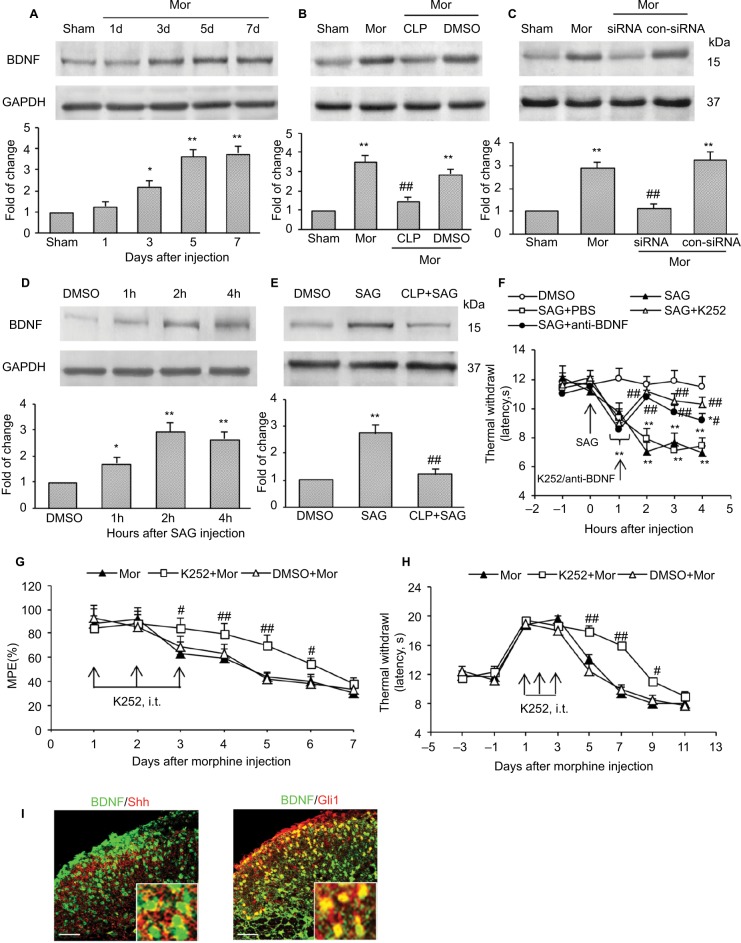Figure 5.
Shh signaling contributed to tolerance and MIH through regulating BDNF expression.
Notes: (A) Expression of BDNF increased in a time-dependent manner after chronic morphine treatment. Inhibiting Shh signaling by cyclopamine (B) and Shh-target siRNA (C) significantly suppressed upregulation of BDNF. Tissues were collected on day 4 after morphine injection (B and C). (D) Activating Shh signaling by SAG injection (i.p.) in naïve mice significantly increased BDNF expression, and pretreatment with cyclopamine effectively prevented the upregulation of BDNF induced by SAG (E). Tissues were collected at 2 hours after SAG injection (D and E). Six mice were included in each group (A–E). BDNF inhibitor K252 and anti-BDNF antibody significantly reversed SAG-induced thermal hyperalgesia in naïve mice (F). BDNF inhibitor K252 effectively suppressed and delayed chronic morphine treatment-induced MPE decrease (G) and thermal hyperalgesia (H). BDNF (green) were colocalized with Shh (I, left) and Gli1 (I, right) in the spinal cord (n=4, bar: 50 μm). Insets are magnified areas. Yellow represents colocalization. Tissues were collected on day 7 after the first morphine injection. Ten mice were included in each group (F–H). *P<0.05, **P<0.01 versus sham group (A–C) or DMSO group (D–F). #P<0.05, ##P<0.01 versus Mor group (B, C, G, and H) or SAG group (E and F).
Abbreviations: MIH, morphine-induced hyperalgesia; BDNF, brain-derived neurotrophic factor; siRNA, small interfering RNA; i.p., intraperitoneally; i.t., intrathecally; Mor, morphine; CLP, cyclopamine; DMSO, dimethyl sulfoxide; SAG, smoothened agonist; MPE, maximal possible effect.

